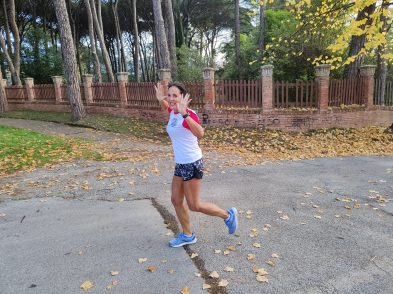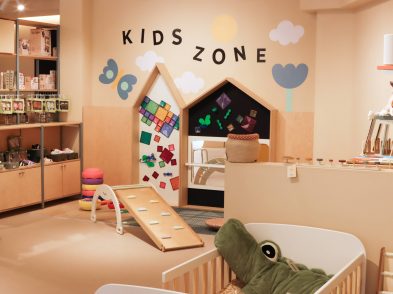Tuscany undoubtedly has one of the highest-quality maternal healthcare programs in Italy, possibly one of the best in the world. Hard to believe? Read on.
Once you know you’re pregnant, there is, of course, the inevitable red tape to confront. First and foremost, you pregnant mothers need to get your hands on a doctor’s certificate certifying that you are expecting and exactly how far along you are. Following that, you need to get a copy of the Libretto di Gravidanza (?Pregnancy Handbook’), issued by the Tuscan Region. This booklet contains all the various tests that you must undergo throughout the course of your pregnancy (lots and lots!), including scans, blood and urine tests and diabetes checks. Scans are performed during the third, fifth and seventh month; blood and urine tests occur monthly; additional tests, such as an amniocentesis, may be requested by your doctor.
At about 39 or 40 weeks, you will be called into the hospital of your choice (in Florence, it is Careggi, Torregalli or Ponte a Niccheri) to have the baby’s heartbeat monitored. Should you pass your due date, this same exam will be performed a couple of times a week.
That being said, moms-to-be have very little time to organize their post-partum lives during a Florentine pregnancy because those nine months are booked with documentation searches and medical examinations. However, the fact remains that every woman has access to very high-quality care, and it is all free of charge provided she falls into one of the qualifying categories for free prenatal healthcare, which includes nearly everyone.
Each of the hospitals in Florence has a very different obstetrics program. Careggi is well known for its famous Margherita program, which is just like a modern American birthing clinic. The Margherita experience is a totally natural childbirth, complete with birthing toys, water baths, soft music and a double room in which mom, her partner and new arrival can share their first few days together. To qualify for the program, you must have an absolutely perfect pregnancy with no signs of possible complications. The downside to the Margherita is the constant risk that when you go into labor no room will be available and you will end up in the normal ward, anyway. However, should you end up in the normal ward in Careggi, the birthing unit there just introduced a program in which opium is being tested for pain management (see TF 119), so you may not even notice where you are!
Torregalli, in Scandicci, has now surpassed Careggi in terms of baby factory production numbers and is the preferred choice of many mothers for the relatively easy availability of pain medication. Just ask and you’ll get your epidural before the hysteria and homicidal tendencies kick in.
Ponte a Niccheri obstetrics, smaller than either Torregalli or Careggi, is known for promoting natural childbirth with surgical or medical intervention only when the health of the mother or child is at risk. In essence, you can scream the building down, but you won’t even get an aspirin if your vitals (and those of your arriving son or daughter) are holding their own.
Then the due date arrives. One of the first things you might notice is that security is not a major concern in any of these major maternity wards. At night, the doors are closed and a bell must be rung to access the wards. During the day, it’s pretty much an open house. Things tend to go missing, although thankfully they are purses, wallets, cell phones and cameras rather than babies. It remains, however, unnerving to find that the bathrooms are used by the friends and relatives of another ?patient’ and that street sellers come in for bed-to-bed commercial activities.
One thing that certainly has changed in recent years is where the labor and birth take place. Often, much of labor occurs in your bed in the ward and in full view of visitors (and strangers). How long you stay there depends on the availability of labor rooms in the birthing area, where security is thankfully very tight. Today, most births take place on a bed, in the labor rooms, as opposed to the awful OB chair under the bright McDonald’s lights of the actual delivery room, which is only used for difficult or risky births. Once the I’m-gonna-die part is over with, high priority is given to parent-child bonding. After a quick bath and the preliminary checks, newborn babies are handed straight over to their parents and the entire hospital staff vanishes, leaving you alone for that important first hour to welcome your new arrival into the world.
Once you are back in the ward, the staff does its best to organize so that new mums are with new mums and expectants with expectants. But for logistical reasons, it doesn’t always work out this way. To me, it made no difference at all: you’re already guaranteed zero sleep, with mothers in labor grunting and groaning, newborns screaming and staff calling to each other along the corridors. The good news is that you will be so exhausted that you’ll quickly learn to catnap for 15 minutes (40 times a day).
A surprising thing to bear in mind regarding Italian hospitals is that you will be provided with medical care, a bed, food and drink-but nothing else. So, in your hospital bag you need to include towels, soap, knife, fork, spoon, glass, mug-the little things that get you through the day.
Your stay in the hospital will normally be about two days after a natural birth, 8-10 days following a C-section. Various postnatal clinics such as pelvic floor rehabilitation and breastfeeding are available and the hospital will usually provide you with this information.
Births must be registered within three days, and most hospitals have a registration facility available; otherwise you must go the town hall where you, the mother, are resident in order to register your child.
On the whole it’s a great system, and things work very well. Another plus about Italy is that you also get the feeling that most of the staff are genuinely interested in your impending sprog. And if you do choose to do it here, despite being of foreign blood, you will still have a tiny Florentine bambino to cuddle at the end of the day.







